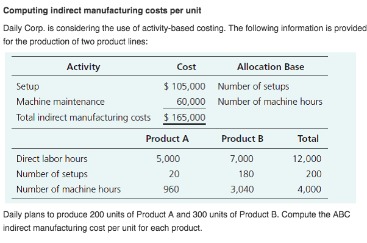
After graduating from Montana State University, he cut his teeth preparing taxes at a local CPA firm while also starting a landscape and lawn care business, which he grew and ultimately sold. A series of events eventually brought him to FABC, where he manages a high-performing team of bookkeeping and accounting specialists. Outside of work, Dan dabbles in real estate investment, mountain biking, skiing, hunting, and just about everything Montana has to offer with his partner, Jennie Lynn, and black lab, Winni. Conditions can reference the transaction’s description, bank text, or amount. If the capitalization table vc example condition is based on the transaction’s description or bank text, you can specify that it must contain, doesn’t contain, or exactly matches the text you enter.
How to use bank rules in QuickBooks Online
We do this through ongoing advocacy and access to education and training, curated technology, compliance support, community, and back-office and client support services. There are a few ways to access the rule creation tool in QBO. Sign up to receive more well-researched small business articles and topics in your inbox, personalized for you. See articles customized for your product and join our large community of QuickBooks users.
Can I use bank feeds for multiple bank accounts in QuickBooks?
- If your bank isn’t shown in a tile at the top of the screen, it isn’t yet connected to your QuickBooks Online account.
- Once you’ve set up the rule, QuickBooks will automatically categorize any transactions that meet the specified criteria.
- This step is also very important as it will decide which account on your books the transaction will go to.
- Each transaction in the For Review tab must be added to the check register, matched to an existing transaction already in QuickBooks, or excluded from QuickBooks.
- Next, you will need to set which conditions will trigger the rule.
We recommend creating them directly from your bank accounts feed as it will pre-fill some of the necessary fields to create your bank rule. Imported transactions that have not been entered into QuickBooks can be added as new transactions to the check register. An example might be an electronic payment of an expense where the bill was not recorded in QuickBooks.
You can also indicate the category that you want the transaction to be assigned to, as well as any tags or classes that you want to apply. Once you’ve set up the rule, QuickBooks will automatically categorize any transactions that meet the specified criteria. Bank rules can be set for expenses, deposits, and transfers. Even if the transactions in your bank feed change slightly from month to month, a bank rule can capture these changes and create entries in your QBO system.
Step 2.1: Match Imported Transactions to Existing Transactions
If class and location do not appear on your screen, you need to enable class and location tracking, as illustrated in our lesson on how to set computer filing system up advanced options in QuickBooks Online. Rules go beyond the automatic processing to give you a finer level of control. They scan downloaded bank items for certain criteria you specify, and then assign particular payees, categories, classes, locations, and more to them. Rules can even help automatically split items between categories and more. The Create rule pop-up should appear on the right of your screen. Give your rule a name and then configure how you want to apply this transaction.
We’ve said this in previous blog posts, training services, webinars, office hours, basically to anyone who will listen… add a vendor or payee to every transaction. This step is also very important as it will decide which account on your books the transaction will go to. If you are unsure of which account to use, search for the vendor name and find how the transaction was previously categorized. QuickBooks Online suggests a match between the payment and the bill, and you can review and confirm the match before completing the transaction.
Set up bank rules to categorize online banking transactions in QuickBooks Online
Bank rules are a feature in QBO that you can set up to categorize recurring transactions from your bank feed. With bank rules, you can automate many of the transactions that come into your bank regularly. As a business owner, you did not start your business to do accounting (unless you are us of course!).

Rules like these can save you from having to update categories and adjust transactions one by one. Be sure to rename it versus using the auto-generated (“suggested”) name to avoid cluttering up your rule list when searching the difference between bookkeeping and accounting later. Be clear and concise when naming the rule and you’ll save yourself a headache down the road. Be sure to click the green Save button when you are done creating your rule. You can undo the match by clicking on the Reviewed tab, locating the transaction, and clicking Undo.
Comments :